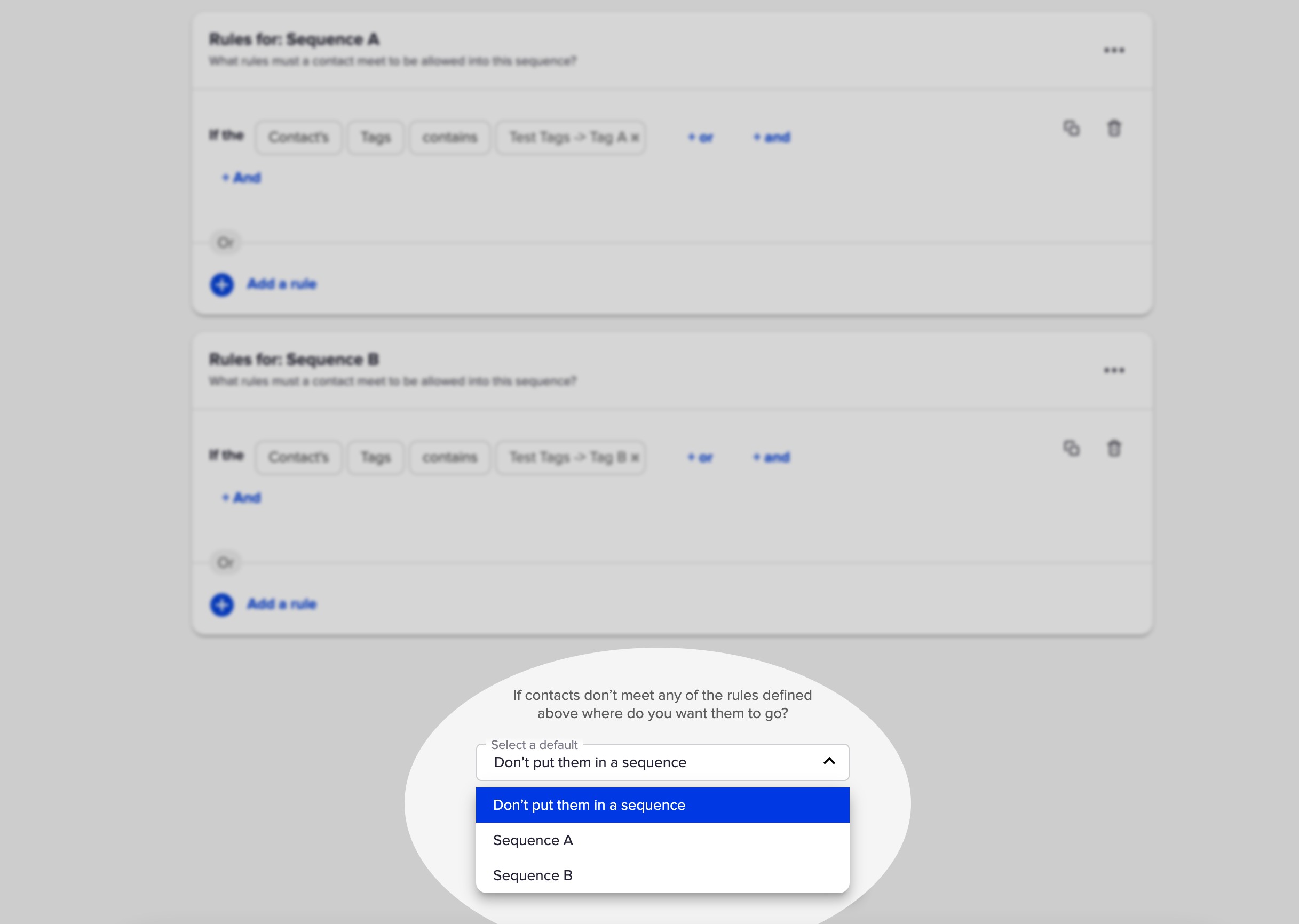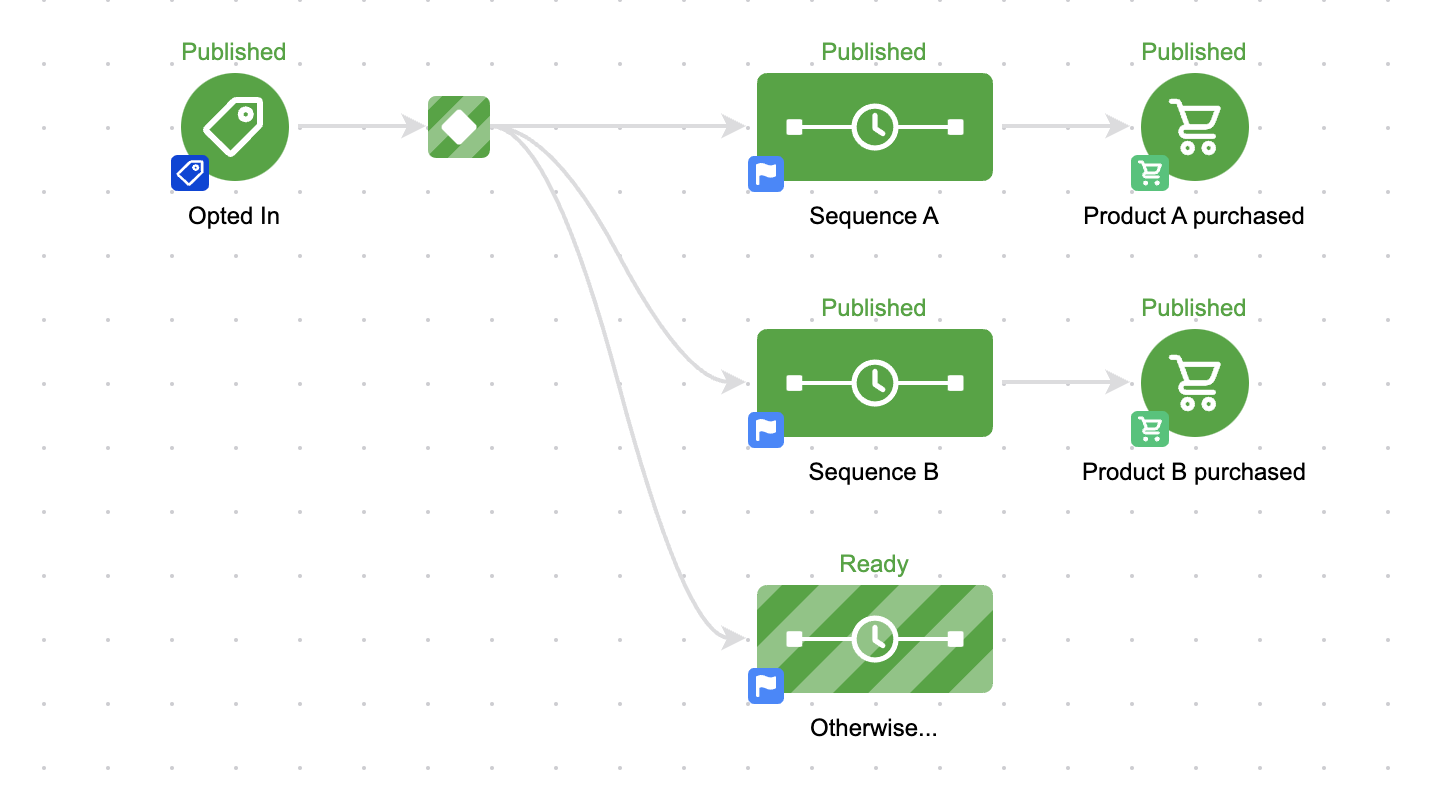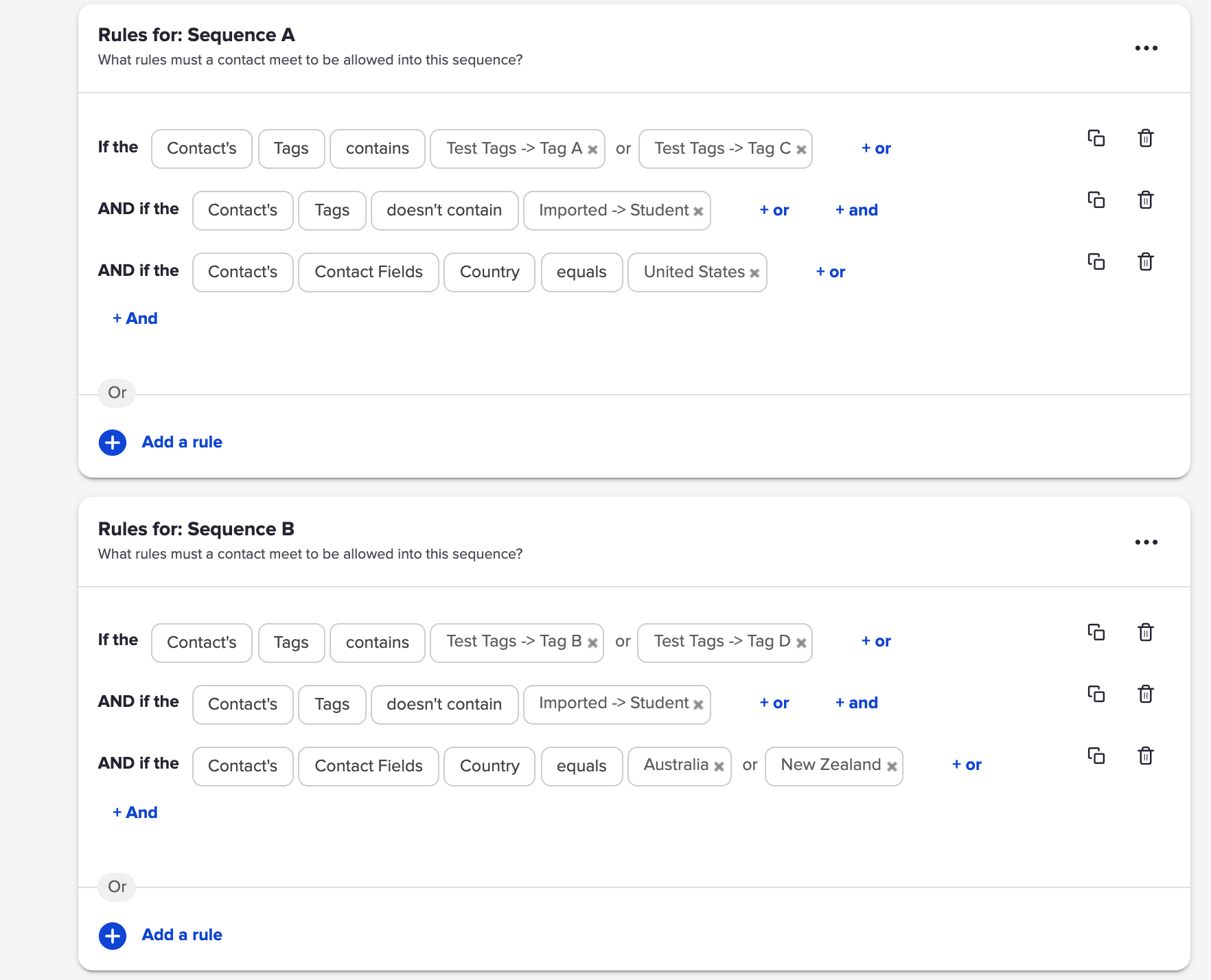So, the Decision Diamond in Keap is a hyper valuable segmentation tool.
It lets us branch contacts into different paths so that we can tailor the automation we design to feel more targeted, and more personal.
And Keap has, wisely, added a default setting so you can choose one of your existing sequences to send them to if they don’t meet the criteria for any of your rules.
But the challenge with this well-meaning feature is that it only lets you select from the two sequences that have rules.
So what if you want to send the contact somewhere else?
Well, you’d have to add a third sequence.
That seems easy enough, but it presents a problem.
The Problem
Well, by default a sequence is open to anyone, right?
So unless we set up rules – all contacts will wind up going into that third sequence.
So that means we need to add rules.
And if this is the ‘otherwise’ sequence, meaning they go here when they don’t meet the other rules – then we’d need to build out the opposite of the rules for Sequence A and B.
And that’s fine if the rules are simple.
But what if the rules are more complex?
That would be exhausting to rebuild – and complicated to invert.
The Solution
So, Scott Richins, one of the world class OG Infusionsoft Experts came up with a super clever (and relatively simple) hack to solve this.
Check it out:
If you find yourself building lots of campaigns, or managing complex decision diamonds, then tuck this hack in your bag o’ tricks.
Massive props to Scott for sharing this approach, and for the countless other things he’s taught me over the years.









Great workaround and pretty simple when you get your head around it. In an ideal world, there wouldn’t actually be a need for it – Keap would provide sufficient logic that the ‘no criteria met’ can be handled gracefully. Very cool, though 🙂
Yes, and yes. Thanks for taking the time to watch and comment.
Just got frustrated last week because I had to take a deep breath and build the long list of opposite rules. Brilliant. Going to go update a few campaigns now.
Hooray – glad this little trick can be useful.
Oh my gosh I can use this SO MUCH and it’s so simple. Thank you!
Riiiight?! All credit to Mr Scott Richins on this one. But glad it can simplify things for you!